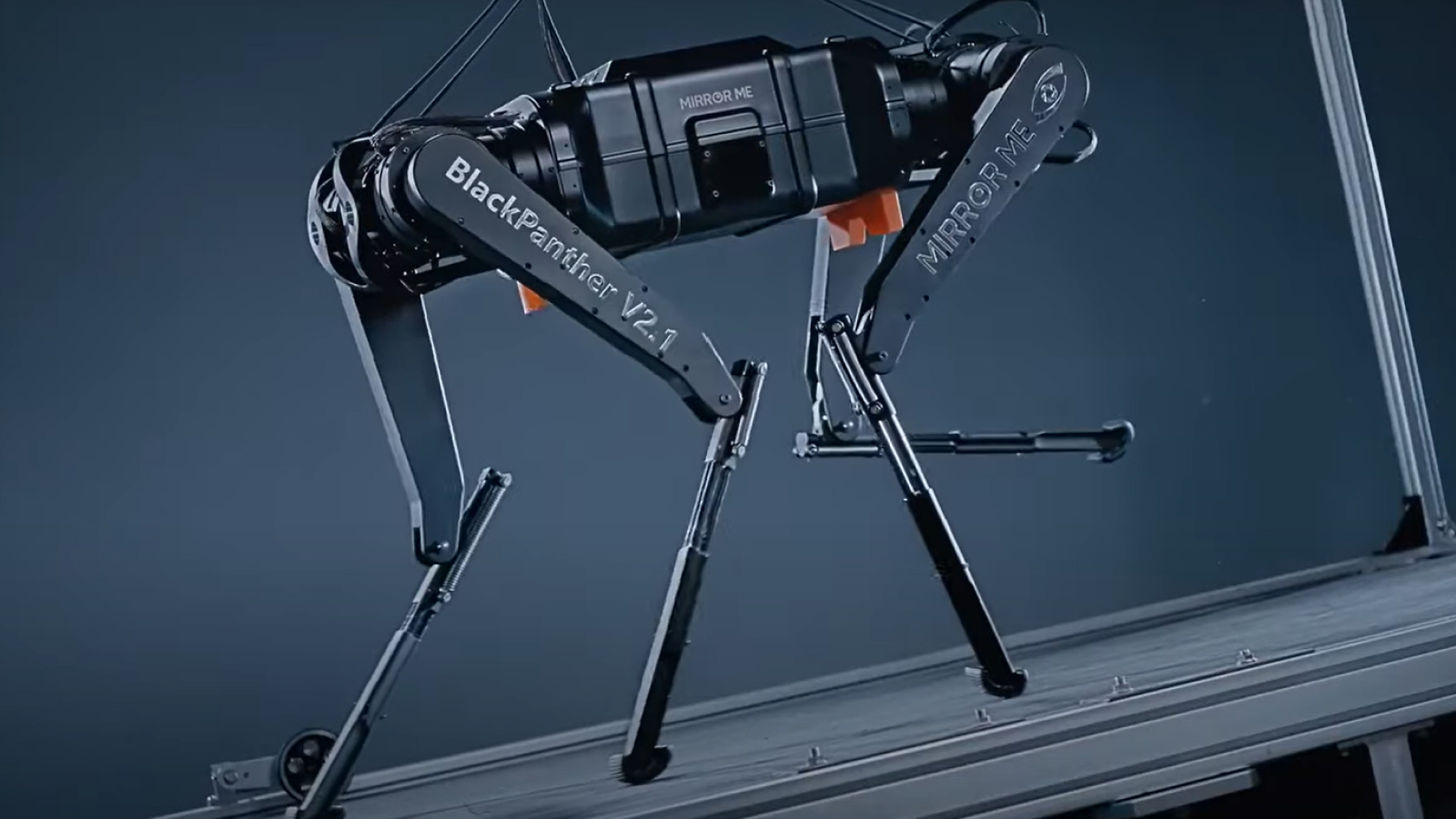Watch China's 4-legged 'Black Panther 2.0' robot run as fast as Usain Bolt | Live Science

China's 'Black Panther 2.0' Robot Can Run Super Fast!
Scientists in China have built a four-legged robot that can run incredibly fast. They call it "Black Panther 2.0," and it's like a super-speedy dog made of metal and wires.
This robot was created by a team at a robotics company called Mirror Me and a research center at Zhejiang University. According to Chinese news, Black Panther 2.0 weighs about 84 pounds and is a little over 2 feet tall.
The amazing thing is how fast it can run. The team says it can sprint 100 meters in less than 10 seconds! In a video, they claim the robot can reach a top speed of 10.4 meters per second (about 23.3 miles per hour). That's almost as fast as Usain Bolt, the world's fastest runner, who ran at a speed of 10.44 meters per second when he set the world record.
How did they make it so fast? The researchers gave the robot special legs with flexible joints, like knees. They also used strong carbon-fiber parts to keep the legs from breaking when the robot runs at top speed.
The robot also uses artificial intelligence (AI) to help it move. This means it can learn to adjust its movements to the different surfaces it's running on. The AI uses a technique called machine learning to make adjustments
It's not clear exactly what Black Panther 2.0 will be used for. Other similar robots have been used for security or for exploring dangerous places. But this robot is much faster than those, so it could have new uses.
Another company, Boston Dynamics, made a robot called "Cheetah" that could run even faster, at 12.6 meters per second. But that robot was much bigger and hasn't been made available for sale.
For now, Black Panther 2.0 is an impressive example of how fast robots are becoming. It shows that robots could one day be much faster and more agile than we ever thought possible.
Live Science tried to contact the lead researcher at Zhejiang University, but they didn't hear back before publishing this article.